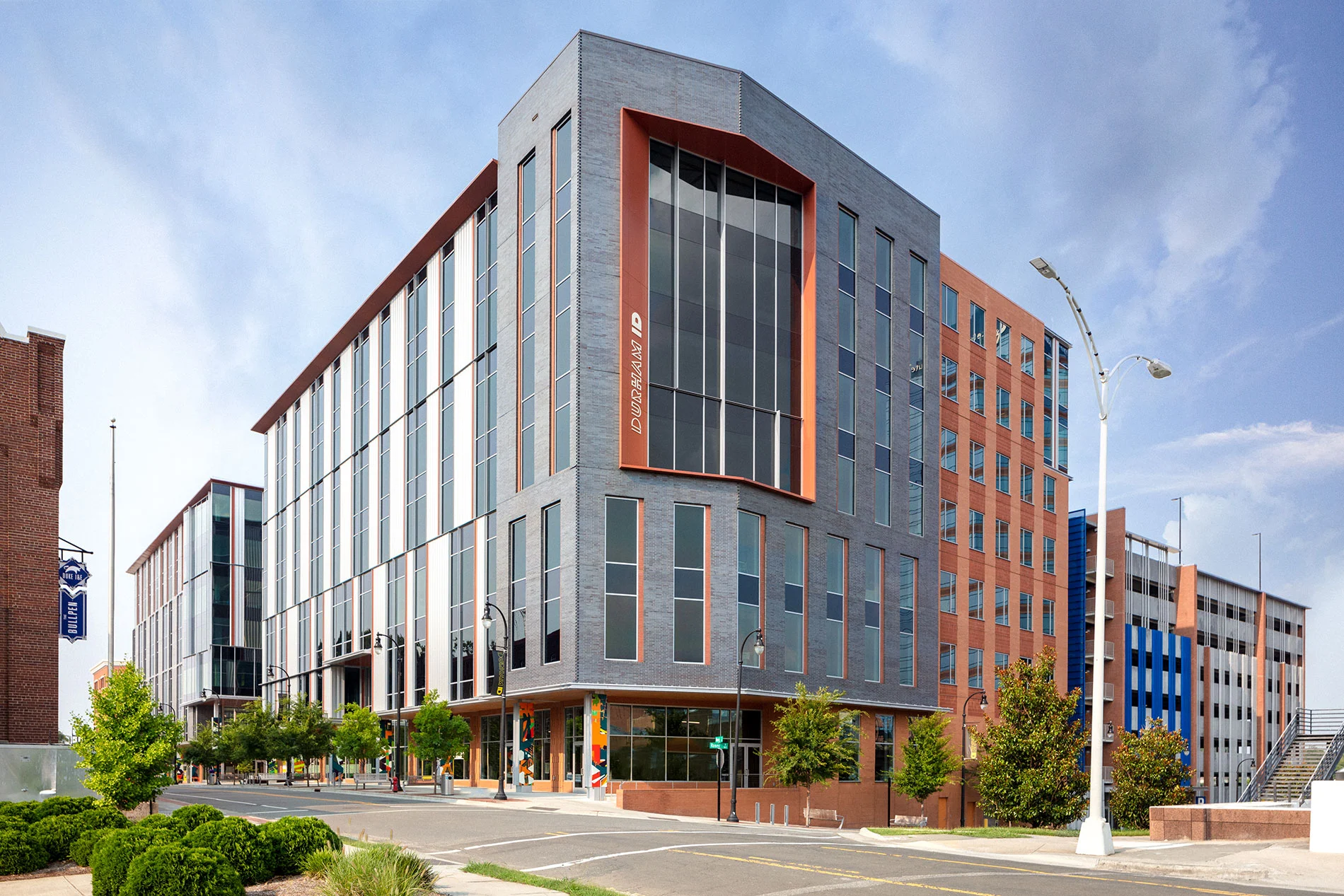Durham ID

Project Overview
BACKGROUND
Duke University is one of the top life science institutions in the United States, located in close proximity to Downtown Durham, North Carolina. Subsequent to growing research and clinical programs, Duke began to consider its future life science real estate needs around 2010. Historically, Duke had taken uses that could not be accommodated on campus and moved them to far-flung parts of the Research Triangle Park (RTP), a significant drive southeast from the heart of its campus community. This strategy of leasing flex buildings for scientists was seen as a “cost effective” approach to managing its life science real estate portfolio but didn’t serve the needs of scientists for connectivity and collaboration.
Longfellow had been interested in expanding in the Raleigh-Durham market for some time and began a strategic, year-long conversation with Duke’s Head of Real Estate, the university EVP’s office, and Duke Medicine stakeholders about the future of Duke’s life science programs, its stiff competition for academic talent, and what an expanded Duke research presence could look like in the market.
Rather than moving scientists far off campus in the RTP, Longfellow proposed concentrating Duke scientific activities in downtown Durham, an unusual recommendation given the condition of downtown at the time and the public perception of safety. However, the landscape of innovation was shifting, and Duke scientists that had spent significant time in Kendall Square recognized the power of creating an urban research cluster for the benefit of their work and also the improvement of downtown Durham.
Duke’s real estate department committed to testing Longfellow’s recommended approach to developing a life science ecosystem in downtown Durham as an off-campus lease was expiring for the Duke Molecular Physiology Institute. However, Institute scientists were initially less than convinced about moving their operations to Durham.
RESPONSE
To understand more about the scientists’ reservations about relocating, Longfellow conducted a series of meetings to understand their needs and pain points. Chief among them was difficulty in attracting talent to grow their program, access to vivarium infrastructure, and amenities. In response, Longfellow bought a 52,000 square foot, former tobacco production facility in downtown Durham and designed a spec lab program to meet the Duke Molecular Physiology Institute’s future growth plans. These spec labs enabled the Institute to attract new research talent by providing immediately-available, plug-and-play lab space—something competing universities were unable to do.
In order to create a true center of gravity for life science research in downtown Durham, Longfellow acquired a second, 120,000 square foot tobacco facility and converted it to lab space for Duke’s use.
However, the collaborative vision developed with Duke called for more than a series of satellite Duke lab facilities: Duke and Longfellow envisioned downtown Durham as a true innovation district, replete with a robust ecosystem of small to medium size companies in the life science and innovation space.
Alongside Duke involvement in key phases of the process, including selection of a master planner, Longfellow acquired 17 downtown acres the Durham ID (Innovation District). 200 Morris Street, a 165,000 square foot lab/office building, was constructed for Duke’s Clinical Research Institute, along with a sister, speculative building at 300 Morris Street. Duke’s Innovation and Entrepreneurship Initiative was sited at another Durham ID building, rounding out the ecosystem with entrepreneurial support services. Today, a portion of the Duke Clinical Research Institute building is subleased to Google, and conversations are underway with other large tech companies to kick off additional construction. Near-term plans for constructing another 200,000 square feet in the Durham ID are in process, along with additional plans on the long-term horizon for the development of three additional sites.
